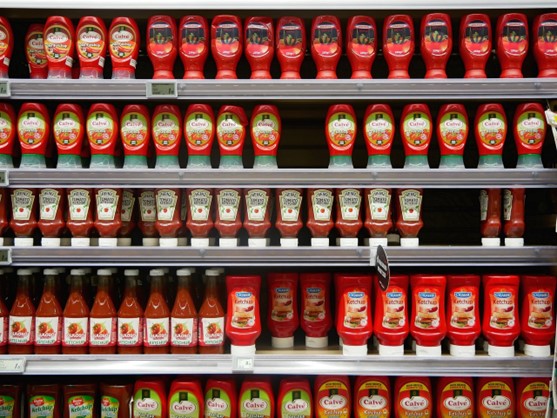
- February 16, 2023
- , 7:18 am
Uncovering the Basics: What Is a Planogram and How Does It Work?
Planograms, also known as plan-o-grams, are used in the retail industry to analyze product placement and to optimize the store layout. They are used to determine how much merchandise should be displayed in a particular area, in what order, and at what height. It also helps in creating a visually appealing, organized, and easy-to-navigate shopping experience for customers.
Introduction to Planograms
Planograms are visual diagrams of the store layout that help retailers organize the merchandise, create an attractive display, and maximize sales. They are used to plan and maintain the optimal product placement in a store, so that customers can easily find what they are looking for and have a pleasant shopping experience. By using planograms, retailers can ensure that their store looks attractive and well-organized, which can help to increase sales and build customer loyalty.
What is a Planogram?
A planogram is a diagram that shows the layout of a store and its products. It typically includes the location of merchandise, the size of each item, and the order in which items are displayed. Planograms are used to analyze product placement and optimize the store layout. Retailers use planograms to plan and maintain the optimal product placement in a store, so that customers can easily find what they are looking for and have a pleasant shopping experience.
A planogram can help retailers determine the best placement for products, based on factors such as customer behavior, store traffic, and product visibility. It can also help to create a visually appealing, organized, and easy-to-navigate shopping experience for customers. Retailers can also use planograms to identify potential issues, such as out-of-stock items, and to make sure that the store is well-stocked.
Benefits of Using Planograms
Planograms have many benefits for retailers. They can help to maximize sales by ensuring that products are in the best possible location. Planograms can also help retailers to increase customer loyalty by creating an organized and attractive store layout that is easy to navigate. Additionally, planograms can help reduce costs by allowing retailers to identify potential issues, such as out-of-stock items, and to make sure that the store is well-stocked.
Planograms can also help retailers to stay ahead of the competition and to identify trends in the industry. By analyzing the data from planograms, retailers can gain insights into customer behaviors and preferences, and can make decisions about product placement and store layout accordingly.
Types of Planograms
There are several different types of planograms that are used in the retail industry. The most common types of planograms are static planograms, dynamic planograms, and interactive planograms.
Static planograms are pre-set plans that are used to plan and maintain the optimal product placement in a store. They are typically created using software and are used to analyze product placement and optimize the store layout.
Dynamic planograms are used to analyze customer behavior and to create more responsive store layouts. They allow retailers to adjust product placement in real-time, based on customer feedback and other data.
Interactive planograms are used to create an interactive shopping experience for customers. They can be used to create immersive experiences, such as virtual tours, and to collect customer feedback.
How to Build a Planogram
Building a planogram is relatively straightforward. First, retailers need to decide on the type of planogram they want to use. Once they have decided on the type of planogram, they need to collect data about the store layout and customer behavior. This data can be collected using surveys, traffic data, and other methods.
Next, retailers need to create a planogram using the data they have collected. This can be done using planogram software, which allows retailers to create a planogram quickly and easily. Planogram software can also be used to analyze the data and to identify potential issues and opportunities.
Finally, retailers need to implement the planogram. This involves setting up the store layout according to the planogram, stocking the shelves, and monitoring the planogram to ensure that it is working correctly.
Planogram Examples
Planograms can be used in a variety of different ways. Below are some examples of how planograms can be used in the retail industry:
- Grocery stores can use planograms to optimize the layout of their store and to ensure that customers can easily find what they are looking for.
- Department stores can use planograms to create attractive displays and to ensure that products are in the best possible location.
- Clothing stores can use planograms to create a visually appealing store layout and to ensure that products are organized in a way that makes sense to customers.
- Retailers can use planograms to identify potential issues, such as out-of-stock items, and to make sure that the store is well-stocked.
- Retailers can also use planograms to analyze customer behavior and to identify trends in the industry.
Planogram Software Solutions
Planogram software solutions are available to help retailers create and manage planograms. These solutions typically include features such as product placement analysis, store layout optimization, and customer feedback analysis. They can also help retailers to identify potential issues, such as out-of-stock items, and to make sure that the store is well-stocked.
Planogram software solutions can be used to create static, dynamic, and interactive planograms. They can also be used to analyze customer behavior and to identify trends in the industry. Additionally, planogram software solutions can be used to create custom planograms, so that retailers can tailor the store layout to meet the needs of their customers.
Best Practices for Planogram Management
Planogram management is an important part of retail operations. Here are some best practices that retailers should follow when managing their planograms:
- Regularly review the planogram to ensure that the store layout is optimized and up-to-date.
- Monitor customer feedback and adjust the planogram accordingly.
- Use planogram software solutions to create and manage planograms.
- Use analytics to identify potential issues, such as out-of-stock items, and to make sure that the store is well-stocked.
- Analyze customer behavior and identify trends in the industry.
- Create custom planograms to meet the needs of the customers.
- Regularly review the planogram to ensure that it is working correctly.
We are here to help!
Planograms are an essential tool for retailers. They can help to maximize sales, increase customer loyalty, and reduce costs. Planograms can be used to create a visually appealing and easy-to-navigate store layout, and to identify potential issues, such as out-of-stock items. Planogram software solutions can be used to create and manage planograms, and to identify trends in the industry. By following best practices for planogram management, retailers can ensure that their store is well-organized and that customers have a pleasant shopping experience.
Ready to get started with planograms? Check out EZPOG, our valuable, cloud-based suite of planogram development tools and image repository software.

